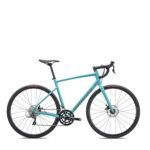It’s quite something when you realize the punch your electric bike packs. Recently, experiencing my 29er beach cruiser with a 1500W hub motor really opened my eyes to what’s possible. Weighing in at 85lbs with me at 155lbs, this setup, running on a 52V 11.5ah battery, delivers some genuinely surprising performance on flat roads.
High-Speed Thrills and Energy Consumption
Pushing it to the limit with a fresh charge of 58.7v and the controller maxed out at 40A, hitting 41mph is exhilarating. The power draw at 2200w+ in these moments is intense, and the speed definitely turns heads. These high-speed bursts, perfect for quick errands, are pure fun. However, this kind of riding comes at a cost. The range in this mode is around 12 miles per charge, translating to a significant 50 watt-hours per mile.
Maximizing Range and Efficiency
For everyday riding where distance matters more than outright speed, regulating the controller to 20A and capping the speed at 20mph makes a world of difference. In this mode, power consumption stays under 1000w, and with careful Pedal Assist System (PAS) settings, it’s possible to average just 17 watt-hours per mile. This dramatically extends the range to about 35 miles per charge while maintaining a comfortable average speed of 12-13mph.
Both scenarios, whether prioritizing speed or range, involve casual riding with minimal pedal effort. The high-speed runs are mostly throttle-controlled, while the efficient, longer rides utilize PAS with light pedaling. Overall, this e-bike setup proves incredibly versatile. The only minor drawback is in very low-speed situations, which are infrequent and easily managed by switching off the system and pedaling manually.


